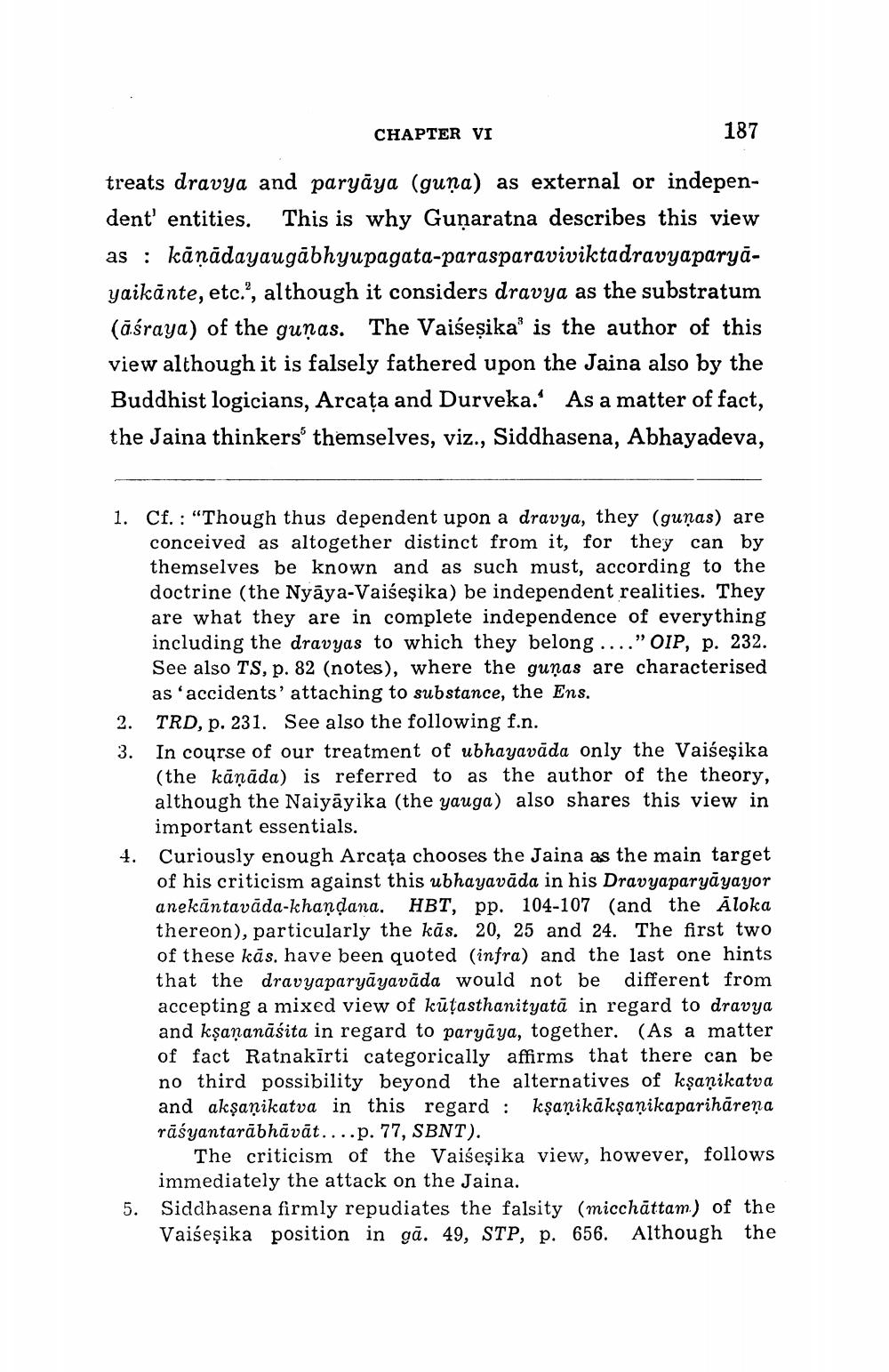________________
CHAPTER VI
187
treats dravya and paryāya (guna) as external or independent' entities. This is why Gunaratna describes this view as : kāņādayaugābhyupagata-parasparaviviktadravyaparyāyaikānte, etc.?, although it considers dravya as the substratum (äśraya) of the guņas. The Vaišeşika' is the author of this view although it is falsely fathered upon the Jaina also by the Buddhist logicians, Arcața and Durveka. As a matter of fact, the Jaina thinkers themselves, viz., Siddhasena, Abhayadeva,
Cf. : "Though thus dependent upon a dravya, they (guņas) are conceived as altogether distinct from it, for they can by themselves be known and as such must, according to the doctrine (the Nyāya-Vaišeşika) be independent realities. They are what they are in complete independence of everything including the dravyas to which they belong...." OIP, p. 232. See also TS, p. 82 (notes), where the guņas are characterised
as 'accidents' attaching to substance, the Ens. 2. TRD, p. 231. See also the following f.n. 3. In course of our treatment of ubhayavāda only the Vaišeşika
(the kāņāda) is referred to as the author of the theory, although the Naiyāyika (the yauga) also shares this view in important essentials. Curiously enough Arcața chooses the Jaina as the main target of his criticism against this ubhayavāda in his Dravyaparyāyayor anekāntavāda-khandana. HBT, pp. 104-107 (and the Aloka thereon), particularly the kās. 20, 25 and 24. The first two of these kās, have been quoted (infra) and the last one hints that the dravyaparyāyavāda would not be different from accepting a mixed view of kūțasthanityată in regard to dravya and kşananāśita in regard to paryāya, together. (As a matter of fact Ratnakīrti categorically affirms that there can be no third possibility beyond the alternatives of kşaņikatva and akşaņikatva in this regard : kşaņikākşaņikaparihāreņa rāśyantarābhāvāt....p. 77, SBNT).
The criticism of the Vaiseșika view, however, follows immediately the attack on the Jaina. 5. Siddhasena firmly repudiates the falsity (micchättam) of the
Vaiseșika position in gā. 49, STP, p. 656. Although the




